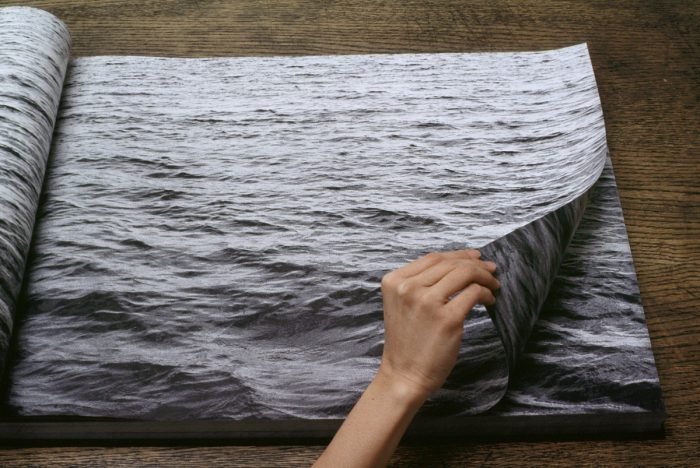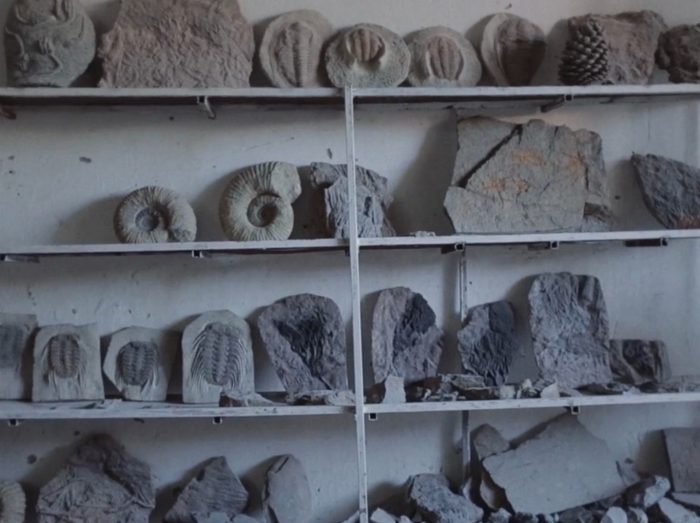Tiempo de lectura: 4 minutos

29.09.2019
Museum of Art and Design at MDC, Miami, Florida, USA
5 de abril de 2019 – 29 de septiembre de 2019



Museum of Art and Design (MOAD) at Miami Dade College (MDC) presents Where the Oceans Meet, an exhibition of modern and contemporary art that resonates with the pioneering thought of two Caribbean writers, Lydia Cabrera and Édouard Glissant. The international group of thirty-nine artists and collectives in the exhibition consider notions of shifting and porous borders—geographic, national, cultural, social, racial, ethnic, and linguistic—and how crossing borders has shaped our world. The exhibition is curated by Hans Ulrich Obrist, Asad Raza, Gabriela Rangel, and Rina Carvajal.
We often imagine that globalization and technology bring us closer together and make us more connected, yet borders—both physical and ideological—increasingly divide us. Where the Oceans Meet engages two key figures who devoted their work to thinking through borders: the Cuban painter, scholar, and writer Cabrera (Havana, Cuba, 1899–1991, Miami, Florida) and the Martinican philosopher, poet, and literary critic Glissant (Sainte-Marie, Martinique, 1928–2011, Paris, France). Embodied by the works of art in the exhibition, the ideas of Cabrera and Glissant together explore the grounds from which art can consider and break through barriers of history, geography, and culture.
Although coming from different places and parts of the world, the artists in this exhibition share this foundational space that simultaneously separates and connects them. Echoing the literary, anthropological, and philosophical work of Cabrera and Glissant, their art interrogates how borders shape identities and negotiate imaginary spaces. Their inquiries resonate across mediums and genres, and attempt to answer urgent questions that concern us all today. In addition to a selection of archival materials related to Cabrera and Glissant, Where the Oceans Meet includes works by Niv Acosta, Etel Adnan, Carlos Alfonzo, Kader Attia, Belkis Ayón, Yto Barrada, Daniel Boyd, Tania Bruguera, Sebastián Calfuqueo Aliste, Agustín Cárdenas, Maya Deren, Manthia Diawara, Melvin Edwards, Juan Francisco Elso, Öyvind Fahlström, Simone Fattal, Theaster Gates, Andrea Geyer, Sylvie Glissant, Dominique Gonzalez- Foerster, Felix Gonzalez-Torres, Koo Jeong A, Wifredo Lam, Glenn Ligon, Lani Maestro, Roberto Matta, Julie Mehretu, Ana Mendieta, The Otolith Group, Amelia Pelaez, André Pierre, Walid Raad, Raqs Media Collective, Anri Sala, Antonio Seguí, Elena Tejada-Herrera, Pierre Verger, Jack Whitten, and Andros Zins-Browne.
Where the Oceans Meet gathers these artists’ and writers’ visions for transforming the world when politics fail. For Glissant, such visions condense a poetics as “a new region of the world.” Moving between cultures, the artists in this exhibition handle multiple layers of time and space, making palpable the many opacities pertaining to migration, diasporic movements, language, race, gender, memory, history, religious rituals, violence, and hospitality.
In her transdisciplinary intellectual and creative work, Cabrera fluidly connected cultures, languages, and genres while disrupting racial barriers. Her research made possible a new awareness of culture conceived as a process of social relations. As a writer and ethnographer, she approached the languages, religions, myths, and cosmologies of Afro-Cubans without class prejudice or cultural hierarchies. Similarly, her disinterest in academic theorizing and her methods of constructing knowledge led her to imagine a rich space of contamination between fiction and reality, between her own literary work and the testimonies of her informants, which fed her numerous ethnographic studies. This exhibition puts Cabrera’s ideas into productive communication with those of Glissant, likewise committed to preserving and highlighting connections among cultures. For Glissant, the archipelago and the drift of the oceans constitute a pattern for a future region of the world, where oceans (and cultures) meet. His work transgresses the boundaries between theory and poetry to enhance understanding of language, identity, space, history, and knowledge. He examines the pain historically endured by Caribbean communities, and the sustainability and innovation that derives from survival under duress, to contemplate cultural transformations affecting peoples today on a global scale.
The title of the exhibition, Where the Oceans Meet, comes from a sentence that opens Glissant’s 2006 book Une nouvelle région du monde (A New Region of the World). The phrase suggests the geographical connection between Glissant and Cabrera; it also hints at a transnational and global conception of the world. Where the Oceans Meet implies a constantly shifting border where peoples, cultures, languages, memories, and identities encounter and affect each other, in favorable times as well as in times of disaster. This swarm of tides and streams also conjures an image of the mind, where individual and collective subconscious drives and memories meander. More than a metaphor, it names the location where the multiple layers and sedimentations of our global world encounter and dissolve geographic and political frontiers.
We may also understand Where the Oceans Meet as referring to an aesthetics generated within and from meetings among peoples and cultures. Creative processes, their unpredictable shapes and transformations, can result from encounter and from displacement of social, political, and cultural practices. The experience of resilience, and of attempts to restructure a sense of belonging, is also an aesthetic experience.
Miami, a city where oceans meet, provides a most relevant location for this exhibition. On this occasion, Miami, so often imagined as a crossroads of the Americas and a space of transition par excellence, will offer a platform for questioning colonial and modern thought, and placing it into perspective.
—
Comentarios
No hay comentarios disponibles.